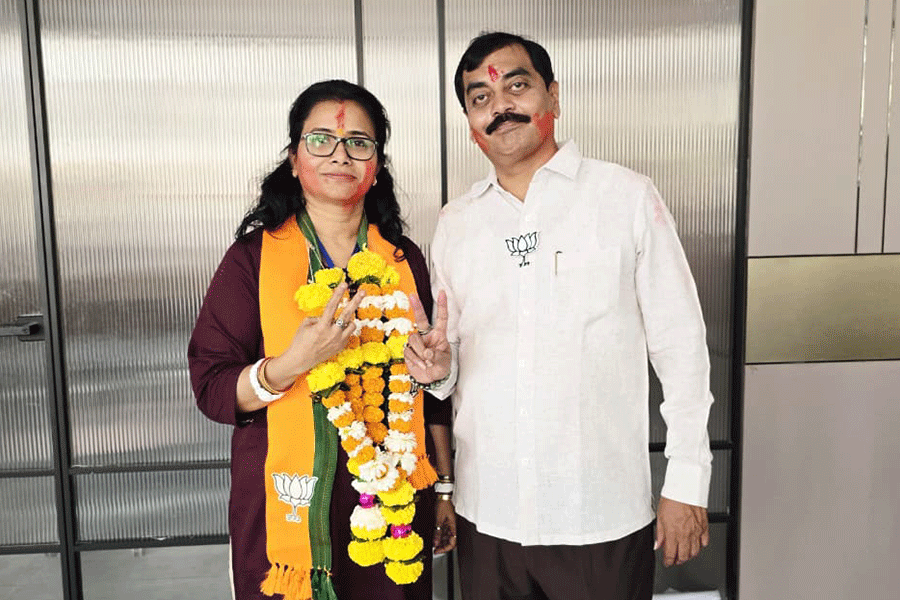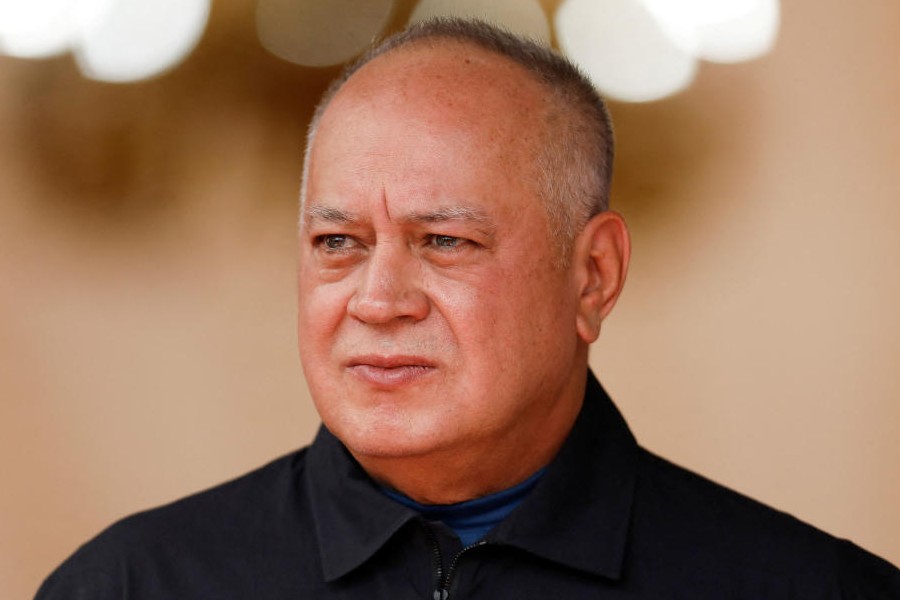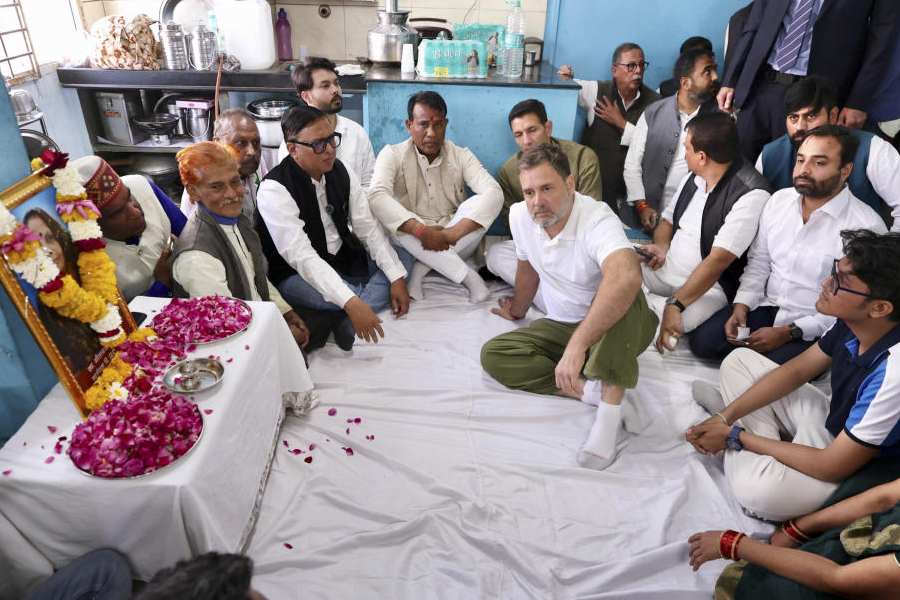 |
| Indian and Chinese flags line Rajpath on Tuesday. Picture by Prem Singh |
New Delhi, Sept. 16: Eyeball-to-eyeball in Ladakh and eye to eye on the banks of the Sabarmati, India and China today set up a summit meeting of Prime Minister Narendra Modi and President Xi Jinping even as their armies faced off on Tibetan pastures.
A flag meeting of Indian and Chinese commanders yesterday at Spanggur Gap in southeastern Ladakh ended inconclusively, with the Chinese refusing to return to original locations at two places: Chumar and Demchok.
There are a total of eight spots along the border with Ladakh where Indian and Chinese troops often face off. The difference this time is that an eyeball-to-eyeball situation is coinciding with the state visit of the Chinese President.
At Chumar, at a height of around 15,000 feet in the area generally known as 30R — signifying that the place is at least 30 metres higher than its surroundings — Indian troops of the army and the Indo-Tibetan Border Police (ITBP) are barely 100 metres apart from the soldiers of the Chinese Peoples’ Liberation Army’s (PLA) Border Defence Regiment.
The vantage point at the apex of a ridge gives the Indian troops a clear view of Chinese movements. The Chinese want India to vacate the height, alter the frontier and claim the area known as Tible-Mane.
“In Chumar, China probably wants a straight border from PT (point) 4925 to PT 5318 to bring the Tible-Mane area under its control. The PLA has built a 4.5km road in Pangong’s Sirijap area covering 83sqkm,” said Phunchok Stobdan, former diplomat and central Asia expert with the Institute of Defence Studies and Analyses (IDSA).
Stobdan and sources in the Indian Army agree that they are a little taken aback by the Chinese opening up a “front” in Chumar that was undisputed till about two years back. The frontier along Tible-Mane, near Jammu and Kashmir’s inter-state border with Himachal Pradesh, is recognised as the “International Boundary” and not as the “Line of Actual Control (LAC)”.
In Demchok, east of Chumar, the face-off between the Indians and Chinese is almost six days old. Tibetan Changpas — nomads — from either side have pitched Rebos (yak hair tents) on a pasture in a place the Indian Army calls the Charding-Ninglung Nullah (CNN) Track Junction.
The local administration also wanted to build on the grazing ground a canal under the National Rural Employment Guarantee Act (NREGA), Leh’s deputy commissioner Simrandeep Singh Gill said yesterday. But the Chinese have objected, suspecting that the Indian Army is using civil works as a ruse to build facilities for the military.
At 30R in Chumar, where the Indian and Chinese troops are barely 100 metres apart and armed, they have pitched tents — as anyone would do at that height where it is not only cold but also very windy. They are facing each other, much like last year’s incident at Raki Nala in the Depsang Plains near Daulat Beg Oldi.
The troops on the ground continue to be engaged because India wants China to stop building a road that it says is coming into its own territory. The Indian troops are on higher ground and can see movements on the Chinese side clearly. The post at 30R is also equipped with surveillance cameras. The Chinese want this tactical and vantage position to be vacated. The Indian army refuses.
At the flag meeting yesterday, the Indian side was understood to have told the Chinese that procedures under a protocol signed in 2005 should be adhered to in addressing border disputes. The Chinese, while agreeing, are said to have conveyed they will return for talks.
China envoy
China today appointed Le Yucheng as its ambassador to India, replacing Wei Wei, the state-run Xinhua news agency said. Le has served as China’s assistant minister of foreign affairs and was until recently the ambassador to Kazakhstan.











